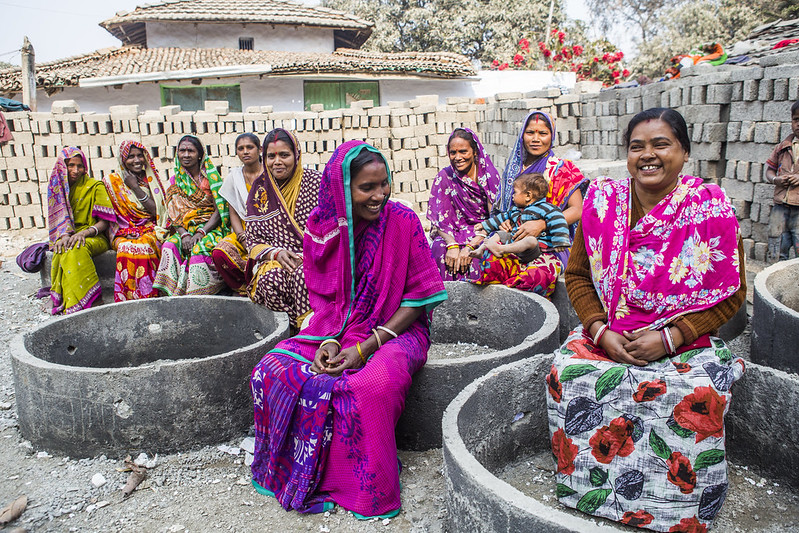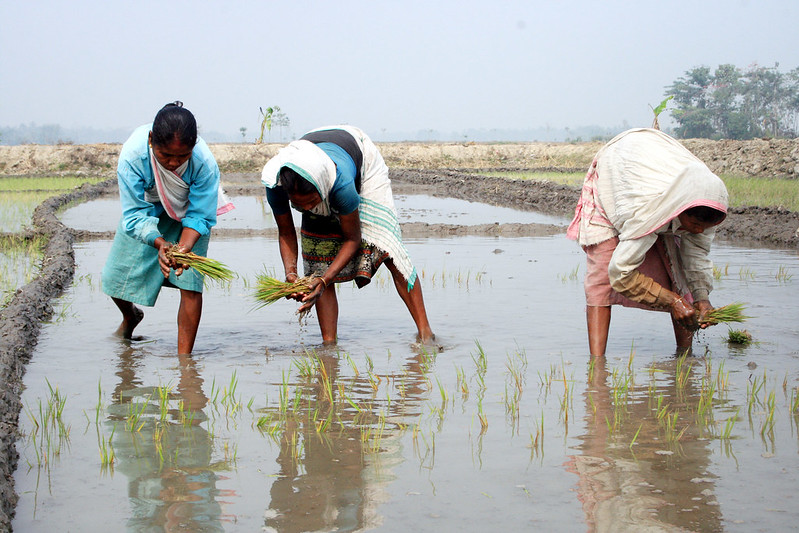In India, women and girls are facing not just the threat of infection but also increased violence, risk of child marriage, job losses and disproportionate access to social provisions, education, nutrition and vaccines.

India accounts for more COVID-19 cases globally than the rest of the world combined. More than 4,000 people are dying every day due to coronavirus in the second most populous country in the world.
Women and girls are facing not just the threat of infection but also increased violence, risk of child marriage, job losses and disproportionate access to social provisions, education, nutrition and vaccines. India’s gender-blind policy runs the risk of exacerbating existing inequities already worsened in the last year due to the pandemic.
This month, India opened its vaccination drive to all adults, but only online registrations are accepted for the 18–44-year age group. According to the National Family Health Survey (NHFS) of 2020, less than three out of 10 women in rural India and four out of 10 women in urban India have ever used the Internet. The gender gap in vaccine equity in India is already starting to show and it is over 4 percent nationally. In high-COVID burden states, like Delhi and Uttar Pradesh, the male-female vaccination gap is over 10 percent.
In February 2021, despite the pandemic’s unequal impact on women, the Indian government cut its gender budget outlay for this year by 26 percent.
Most Indian cities and states have enforced their own mobility restrictions and lockdowns to curb the spread of the virus, devoid of any nationwide policy. For girls and women, India’s lockdown last year confined them indoors in settings that left them highly vulnerable to violence leading to an uptick in domestic violence—a “shadow pandemic.” Lockdowns limited survivors’ abilities to seek help and redress and worsened factors contributing to domestic violence like financial instability and isolation.
The National Commission for Women (NCW) responded by opening a Whatsapp helpline to improve reporting but this policy left out women without access to cell phones or the internet—often rural and marginalized women. Despite the NCW reporting massive spikes in violence against women during the pandemic year, the gender budget outlay also saw a large cutback in the “Mission for Protection and Empowerment of Women” to Rs 480 Million (or $6.6 million) for 2021-22—as compared to Rs 11.63 Billion ($159 million) in 2021-21 and Rs 9.01 Billion ($123 million) in 2019-20.
The Economic Impact
India has fallen by 28 ranks from 2020 to 2021 on the Global Gender Gap Index: It now ranks 151 out of 156 on Economic Participation and Opportunity sub-index, partly due to its very low female labor force participation—only Pakistan, Syria, Yemen, Iraq and Afghanistan perform worse. Four out of five women were already not working in India even before the pandemic.
Indian women were more likely to lose jobs and less likely to recover them in the first wave of the pandemic that started in March 2020. A recent report by the Center for Sustainable Employment at Azim Premji University found that while 61 percent of working men remained employed during the lockdown and just 7 percent lost employment and did not return to work, only 19 percent of working women remained employed and 47 percent suffered a permanent job loss during the lockdown, not returning to work even by the end of 2020.
One reason was women’s increased unpaid work burden. India’s Time Use Survey found that Indian women, on average, spent 10 times the times as men on housework in 2019 (234 minutes in comparison to 25 minutes). The pandemic further exacerbated women’s unpaid work gap, as the time women spend on family responsibilities increased by nearly 30 percent.

Early reports on the economic impact of the current wave also highlight a disproportionate impact on women’s employment, with rural women forming nearly 80 percent of job losses between March and April 2021. The agriculture sector that cushioned the blow of the pandemic’s first wave has been impacted badly this year with 6 million farmers fewer farmers employed in April 2021 than in March 2021. In rural India, 75 percent of women workers are in agriculture, relative to 55 percent of male workers, according to 2017–18 Periodic Labour Force Survey.
Men are more likely to die of COVID-19, but there is little discussion or policy in place to support widows that are economically and socially ostracized in many parts of the country. Indian women have little access to assets with land ownership, remaining as low as 12.8 percent, despite equal inheritance laws for most women.
Past research found close ties between India’s high female suicide rates and the “clash between women’s aspirations and the rigidity of their social environment.” According to a 2018 study in Lancet Public Health, more than a third of female suicides in the world are committed by Indian women—a trend that may worsen with women’s increasing economic precariousness.
Girls and the Pandemic: Unequal Educational Access and Forced Child Marriages
Ten million girls in India are at risk of dropping out of secondary school due to the pandemic in India, according to the Right to Education policy brief. Girls in India are increasingly at risk of being forced out of school and into child marriage, child labor, sexual exploitation, teenage pregnancy, poverty, trafficking and violence.

The digital gender gap and increased care burden reduced the accessibility of education for many girls. While this is the first year that the government has allocated some funds from its digital literacy program for rural areas to India’s gender budget, the amount remains miniscule—0.00078 percent of the gender budget. As regions like Delhi, Maharashtra, Punjab, Chhattisgarh, and Uttar Pradesh close schools once again, there is little provision to ensure that girls stay in school and/or to combat the resurgence of child marriage.
An estimated 1.5 million underage girls in India are married off each year, according to the United Nations. There is growing evidence of an uptick in child marriages across India due to the pandemic and school closures. Rather than expand reporting on violence in child marriages, the Indian government has decided it will be omitting the data on child brides in India’s Domestic Violence data going forward. The last report found that nearly one in six married girls in India aged 15 to 19 reported they had faced abuse.
Gender inequalities in nutrition are increasing as the pandemic pushes 75 million Indians into poverty, especially in areas where women and girls eat last and least due to social norms. According to UNICEF, 42 percent of adolescent girls aged 15–19 years are undernourished and 54 percent are anemic in India.
The closure of schools has left young and marginalized girls vulnerable as mid-day meal programs were often a major source of nutrition. Despite the Supreme Court’s orders to continue the program, few seem to have implemented it. In states like Uttar Pradesh, 92 percent of children reported not receiving mid-day meal in any form during the last lockdown.
Women and girls in India seem to be fighting a triple pandemic: one, that is restricting their mobility; two, that is restricting their access to education and employment; and three, that is pushing them into forced child marriages and cycles of violence. Their troubles are compounded by a central government that has washed its hands of responsibility and local and state governments unable to recognize the gender blind-spots in their policymaking.
You may also like:





